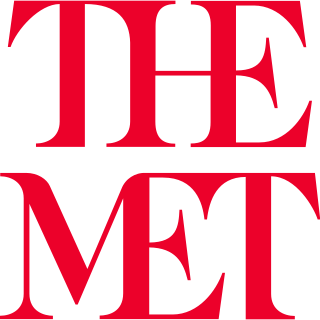
The Metropolitan Museum of Art of New York City, colloquially "the Met", is the largest art museum in the Western Hemisphere. Its permanent collection contains over two million works, divided among 17 curatorial departments. The main building at 1000 Fifth Avenue, along the Museum Mile on the eastern edge of Central Park on Manhattan's Upper East Side, is by area one of the world's largest art museums. A much smaller second location, The Cloisters at Fort Tryon Park in Upper Manhattan, contains an extensive collection of art, architecture, and artifacts from medieval Europe.
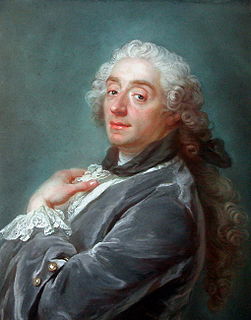
François Boucher was a French painter, draughtsman and etcher, who worked in the Rococo style. Boucher is known for his idyllic and voluptuous paintings on classical themes, decorative allegories, and pastoral scenes. He was perhaps the most celebrated painter and decorative artist of the 18th century.

George Inness was a prominent American landscape painter.

The Hudson River School was a mid-19th century American art movement embodied by a group of landscape painters whose aesthetic vision was influenced by Romanticism. The paintings typically depict the Hudson River Valley and the surrounding area, including the Catskill, Adirondack, and White Mountains. Works by the second generation of artists associated with the school expanded to include other locales in New England, the Maritimes, the American West, and South America.
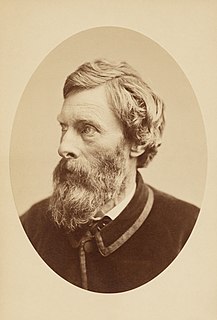
Jasper Francis Cropsey was an important American landscape artist of the Hudson River School.

John Frederick Kensett was an American landscape painter and engraver born in Cheshire, Connecticut. A member of the second generation of the Hudson River School of artists, Kensett's signature works are landscape paintings of New England and New York State, whose clear light and serene surfaces celebrate transcendental qualities of nature, and are associated with Luminism. Kensett's early work owed much to the influence of Thomas Cole, but was from the outset distinguished by a preference for cooler colors and an interest in less dramatic topography, favoring restraint in both palette and composition. The work of Kensett's maturity features tranquil scenery depicted with a spare geometry, culminating in series of paintings in which coastal promontories are balanced against glass-smooth water. He was a founder of the Metropolitan Museum of Art.

Luminism is an American landscape painting style of the 1850s to 1870s, characterized by effects of light in landscape, through the use of aerial perspective and the concealment of visible brushstrokes. Luminist landscapes emphasize tranquility, and often depict calm, reflective water and a soft, hazy sky. Artists who were most central to the development of the luminist style include Fitz Hugh Lane, Martin Johnson Heade, Sanford Gifford, and John F. Kensett. Painters with a less clear affiliation include Frederic Edwin Church, Jasper Cropsey, Albert Bierstadt, Worthington Whittredge, Raymond Dabb Yelland, Alfred Thompson Bricher, James Augustus Suydam, and David Johnson. Some precursor artists are George Harvey and Robert Salmon.

Thomas Worthington Whittredge was an American artist of the Hudson River School. Whittredge was a highly regarded artist of his time, and was friends with several leading Hudson River School artists including Albert Bierstadt and Sanford Robinson Gifford. He traveled widely and excelled at landscape painting, many examples of which are now in major museums. He served as president of the National Academy of Design from 1874 to 1875 and was a member of the selection committees for the 1876 Philadelphia Centennial Exposition and the 1878 Paris Exposition, both important venues for artists of the day.

David Johnson was an American painter, a member of the second generation of Hudson River School painters.

A private collection is a privately owned collection of works or valuable items. In a museum or art gallery context, the term signifies that a certain work is not owned by that institution, but is on loan from an individual or organization, either for temporary exhibition or for the long term. This source is usually an art collector, although it could also be a school, church, bank, or some other company or organization. By contrast, collectors of books, even if they collect for aesthetic reasons, are called bibliophiles, and their collections are typically referred to as libraries.

By the Seashore is a painting by Pierre-Auguste Renoir completed in 1883 and is now housed in the Metropolitan Museum of Art in New York City.

A Goldsmith in His Shop is a 1449 painting by Petrus Christus, a leading painter in Bruges. It is now in the Metropolitan Museum of Art. This is an oil painting on an oak panel that measures 100.1 x 85.8 cm overall and the painted surface is 98 x 85.2 cm. An inscription at the bottom of the painting states "m petr[vs] xpi me· ·fecit·ao 1449· ". In addition, the inscription has an emblem of a clock with a mechanical linkage to a heart, Christus's emblem.
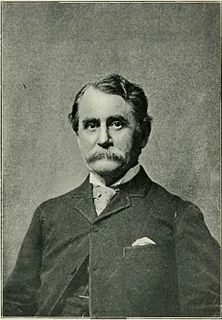
George Henry Yewell was an American painter and etcher.

Landscape with Stars is an early 20th century painting by Henri-Edmond Cross. Done in watercolor on white wove paper, the work is a part of the collection of the Metropolitan Museum of Art in New York City.

Approaching Thunder Storm is an 1859 painting by American painter Martin Johnson Heade. It was his largest painting to date. The painting is in the collection of the Metropolitan Museum of Art. It is praised for its dramatic depiction of the threatening mood of blackening skies and eerily illuminated terrain prior to the storm itself. The painting has been connected to mounting tensions before the Civil War, which were often expressed in terms of natural imagery.

Lachrymae is a late 19th-century painting by British artist Lord Frederic Leighton. Done in oil on canvas, the work depicts a conceptual figure inspired by classical antiquity. Lachrymae is currently in the collection of the Metropolitan Museum of Art.

Bermuda No. 2, The Schooner is an early 20th century drawing by American artist Charles Demuth. Done in watercolor and graphite on paper, the work depicts the ship Danish ship Elsa. The drawing is in the collection of the Metropolitan Museum of Art.

Lobster Fishermen is an early 20th century painting by American artist Marsden Hartley. Done in oil on masonite, the work depicts a group of lobster fishermen in Hartley's native state of Maine. Considered part of Hartley's 'Maine Series', Lobster Fishermen is in the collection of the Metropolitan Museum of Art.
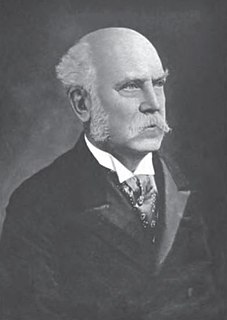
Robert Gordon was a Scottish-American merchant, banker, and art collector who served as the president of the Saint Andrew's Society of the State of New York and was a co-founder of the Metropolitan Museum of Art in 1870.

The Art Collection of Marshall Owen Roberts was a collection of sculpture, antiques and paintings owned by New York industrialist Marshall Owen Roberts. The collection, which featured many prominent American artists and works, including Emanuel Leutze's Washington Crossing the Delaware, remained intact following his 1880 death until it was auctioned off in 1897.




















